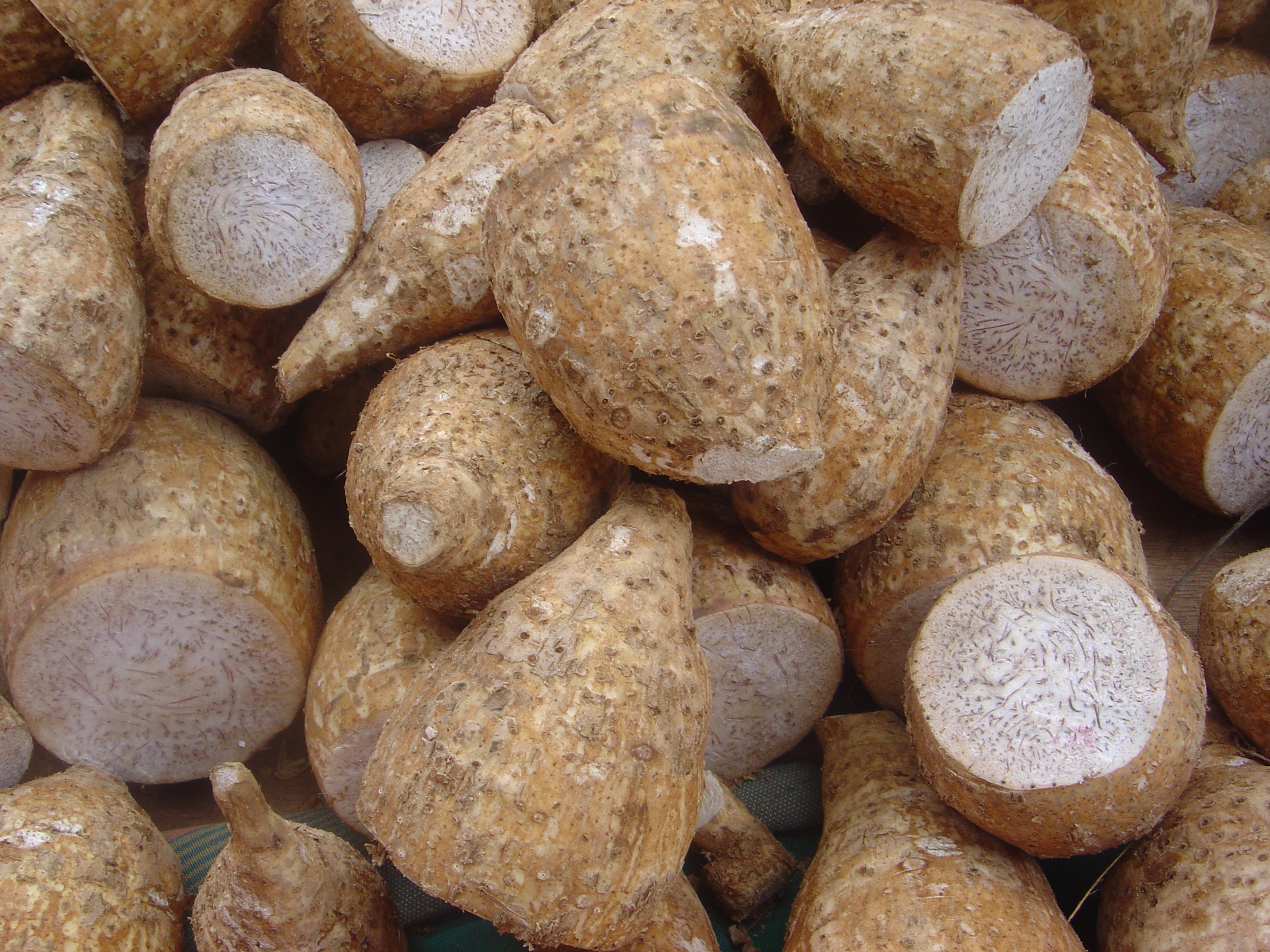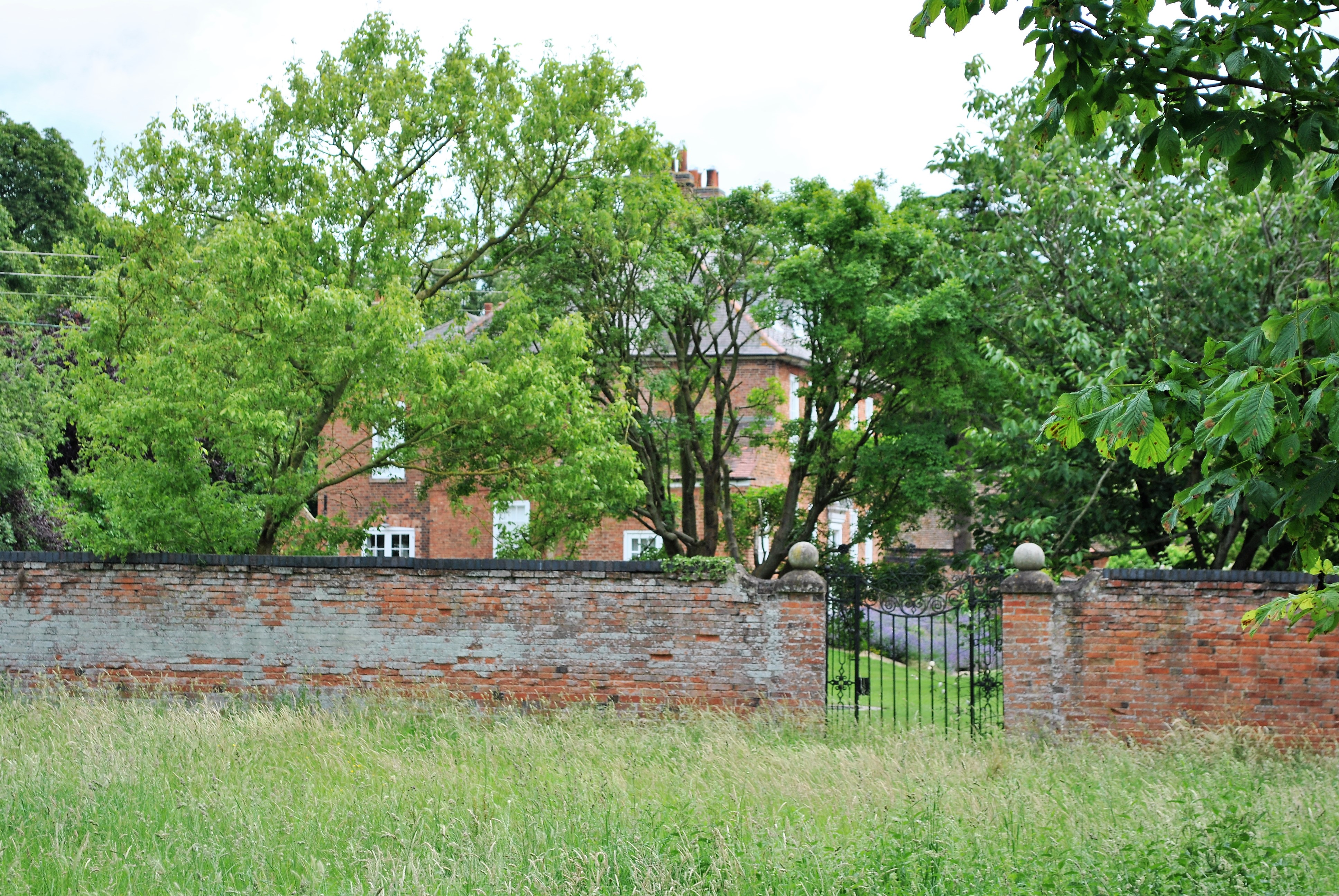|
Celeriac
Celeriac (''Apium graveolens'' Rapaceum Group, synonyms ''Apium graveolens'' Celeriac Group and ''Apium graveolens'' var. ''rapaceum''), also called celery root, knob celery, and turnip-rooted celery (although it is not a close relative of the turnip), is a group of cultivars of '' Apium graveolens'' cultivated for their edible bulb-like hypocotyl, and shoots. Celeriac is widely cultivated in the Mediterranean Basin and in Northern Europe. It is also but less commonly cultivated in North Africa, Siberia, Southwest Asia, and North America. History Wild celery ('' Apium graveolens''), from which both celeriac and celery derive, originated in Europe and the Mediterranean Basin. It was mentioned in the ''Iliad'' and ''Odyssey'' as ''selinon''. ''Σέλινον'' has been translated by Lattimore as "the parsley that grows in wet places," by Murray as " parsley of the marsh," and by Butler as " wild celery." Celeriac was grown as a medicinal crop in some early civiliz ... [...More Info...] [...Related Items...] OR: [Wikipedia] [Google] [Baidu] |
Apium Graveolens
''Apium graveolens'', known in English as wild celery,Streeter D, Hart-Davies C, Hardcastle A, Cole F, Harper L. 2009. ''Collins Flower Guide''. Harper Collins is an Old World species of flowering plant in the family Apiaceae. It was first described by Carl Linnaeus in 1753. The species is widely naturalised outside of its natural range and is used as a vegetable; modern cultivars have been selected for their leaf stalks (celery), a large bulb-like hypocotyl ( celeriac), and their leaves ( leaf celery). Description ''Apium graveolens'' is a stout biennial or monocarpic perennial herb, producing flowers and seeds only once, during its second or a later year. It grows up to tall, with all parts of the plant having a strong celery odour. The stems are solid with conspicuous grooves on the surface (sulcate). The leaves are bright green to yellowish-green, 1- to 2- pinnate with leaflets that are variously shaped, often rhomboid, up to long and broad. The flowers are produced in ... [...More Info...] [...Related Items...] OR: [Wikipedia] [Google] [Baidu] |
Root Vegetables
Root vegetables are underground plant parts eaten by humans or animals as food. In agricultural and culinary terminology, the term applies to true roots, such as taproots and tuberous root, root tubers, as well as non-roots such as bulbs, corms, rhizomes, and Stem tuber, stem tubers. Potatoes are technically not roots, and sweet potatoes are a type of root called tuberous roots. Description Root vegetables are generally storage organs, enlarged to store energy in the form of carbohydrates. They differ in the concentration and balance of starches, sugars, and other carbohydrates. List of root vegetables The following list classifies root vegetables organized by their roots' anatomy. Modified plant stem * Corm **''Amorphophallus konjac'' (konjac) ** ''Colocasia esculenta'' (taro) ** ''Eleocharis dulcis'' (Chinese water chestnut) ** ''Ensete'' spp. (enset) ** ''Nymphaea'' spp. (waterlily) ** ''Pteridium esculentum'' ** ''Sagittaria'' spp. (arrowhead or wapatoo) ** ''Typha sp ... [...More Info...] [...Related Items...] OR: [Wikipedia] [Google] [Baidu] |
List Of Root Vegetables
Root vegetables are underground plant parts eaten by humans or animals as food. In agricultural and culinary terminology, the term applies to true roots, such as taproots and root tubers, as well as non-roots such as bulbs, corms, rhizomes, and stem tubers. Potatoes are technically not roots, and sweet potatoes are a type of root called tuberous roots. Description Root vegetables are generally storage organs, enlarged to store energy in the form of carbohydrates. They differ in the concentration and balance of starches, sugars, and other carbohydrates. List of root vegetables The following list classifies root vegetables organized by their roots' anatomy. Modified plant stem * Corm **'' Amorphophallus konjac'' (konjac) ** ''Colocasia esculenta'' (taro) ** ''Eleocharis dulcis'' (Chinese water chestnut) ** ''Ensete'' spp. (enset) ** '' Nymphaea'' spp. (waterlily) ** '' Pteridium esculentum'' ** ''Sagittaria'' spp. (arrowhead or wapatoo) ** ''Typha spp. ** '' Xanthosoma'' ... [...More Info...] [...Related Items...] OR: [Wikipedia] [Google] [Baidu] |
List Of Vegetables
This is a list of plants that have a culinary role as vegetables. "Vegetable" can be used in several senses, including culinary, botanical and legal. This list includes botanical fruits such as pumpkins, and does not include herbs, spices, cereals and most culinary fruits and culinary nuts. Edible fungi are not included in this list. Legal vegetables are defined for regulatory, tax and other purposes. An example would include the tomato, which is botanically a berry (fruit), but culinarily a vegetable according to the United States. Leafy and salad vegetables Fruits Chili peppers Edible flowers Podded vegetables Bulb and stem vegetables Root and tuberous vegetables Sea vegetables See also * Herbs * Vegetable juice * List of culinary fruits * List of leaf vegetables * List of vegetable dishes * List of foods * Seed References External links Lists of vegetables {{Plant-based diets vegetables vegetables Veget ... [...More Info...] [...Related Items...] OR: [Wikipedia] [Google] [Baidu] |
Apium
''Apium'' is a genus, as currently circumscribed by Plants of the World Online, of 12 species of flowering plants in the family Apiaceae, with an unusual highly disjunct distribution with one species in the temperate Northern Hemisphere in the Western Palaearctic (Europe, western Asia, north Africa), and the rest in the temperate Southern Hemisphere in southern Africa, southern South America, Australia, and New Zealand. They are prostrate to medium-tall annual, biennial or perennial herbs growing up to 1 m high in wet soil, often marshes and salt marshes, and have pinnate to bipinnate leaves and small white flowers in compound umbels. Some species are edible, notably '' Apium graveolens'', which is the wild ancestor of the commercially important vegetables celery, celeriac and leaf celery. The genus is the type genus of the family Apiaceae and the order Apiales; the type species of the genus is ''Apium graveolens''. Species , Plants of the World Online accepts the following sp ... [...More Info...] [...Related Items...] OR: [Wikipedia] [Google] [Baidu] |
Celery
Celery (''Apium graveolens'' Dulce Group or ''Apium graveolens'' var. ''dulce'') is a cultivated plant belonging to the species ''Apium graveolens'' in the family Apiaceae that has been used as a vegetable since ancient times. The original wild species has been selectively bred over centuries into three primary cultivar groups: stalk celery (Dulce Group), consumed for its fibrous edible stalks; leaf celery (Secalinum Group), grown for its aromatic leaves; and celeriac (Rapaceum Group), cultivated for its large, edible hypocotyl. Celery is characterized by its long, ribbed stalks, pinnate leaves, and small white flowers arranged in umbels. Celery is composed primarily of water (95%) but contains large amounts of vitamin K and negligible fat. The vegetable is commonly consumed raw in salads, cooked in soups and stews, or juiced. Celery seeds, which have a strong, aromatic flavor, are used as a spice or processed into celery salt. Celery is among a small group of foods that may pro ... [...More Info...] [...Related Items...] OR: [Wikipedia] [Google] [Baidu] |
Edible Apiaceae
An edible item is any item that is safe for humans to eat. "Edible" is differentiated from "palatability, eatable" because it does not indicate how an item tastes, only whether it is fit to be eaten. Nonpoisonous items found in nature – such as some edible mushroom, mushrooms, insects as food, insects, edible seaweed, seaweed, and so forth – are referred to as edible. Processed items that normally are not ingested but are specially manufactured to be so, like edible underwear or edible packaging, are also labeled as edible. Edible items in nature Humans eat thousands of plant species; there may be as many as 75,000 edible species of angiosperms, of which perhaps 7,000 are often eaten. Edible plants found in nature include List of edible flowers, flowers, List of edible seeds, seeds, berry, berries, edible seaweed, seaweed, and List of edible cacti, cacti. Being able to identify the versions of these plants that are safe to eat is an important survival skills, survival skill. ... [...More Info...] [...Related Items...] OR: [Wikipedia] [Google] [Baidu] |
Shelf Life
Shelf life is the length of time that a commodity may be stored without becoming unfit for use, consumption, or sale. In other words, it might refer to whether a commodity should no longer be on a pantry shelf (unfit for use), or no longer on a supermarket shelf (unfit for sale, but not yet unfit for use). It applies to cosmetics, foods and beverages, medical devices, medicines, explosives, pharmaceutical drugs, chemicals, tyres, batteries, and many other perishable items. In some regions, an advisory ''best before'', mandatory ''use by'' or ''freshness date'' is required on packaged perishable foods. The concept of expiration date is related but legally distinct in some jurisdictions. Background Shelf life is the recommended maximum time for which products or fresh (harvested) produce can be stored, during which the defined quality of a specified proportion of the goods remains acceptable under expected (or specified) conditions of distribution, storage and display. Accordi ... [...More Info...] [...Related Items...] OR: [Wikipedia] [Google] [Baidu] |
Tselina
Tselina or virgin lands (; ) is an umbrella term for underdeveloped, scarcely populated, high-fertility lands often covered with the chernozem soil. The lands were mostly located in the steppes of the Volga region, Northern Kazakhstan and Southern Siberia. Retrieved 2018-07-29. The term became widely used in the late 1950s and early 1960s in the Soviet Union The Union of Soviet Socialist Republics. (USSR), commonly known as the Soviet Union, was a List of former transcontinental countries#Since 1700, transcontinental country that spanned much of Eurasia from 1922 until Dissolution of the Soviet ... during the Virgin Lands campaign () - a state development and resettlement campaign to turn the lands into a major agriculture producing region. See also * Tselinograd References External links * Land tenure Agronomy Agriculture in the Soviet Union History of agriculture {{Kazakhstan-geo-stub ... [...More Info...] [...Related Items...] OR: [Wikipedia] [Google] [Baidu] |
The Iliad (Butler)/Book II
The ''Iliad'' (; , ; ) is one of two major Ancient Greek epic poems attributed to Homer. It is one of the oldest extant works of literature still widely read by modern audiences. As with the ''Odyssey'', the poem is divided into 24 books and was written in dactylic hexameter. It contains 15,693 lines in its most widely accepted version. The ''Iliad'' is often regarded as the first substantial piece of European literature and is a central part of the Epic Cycle. Set towards the end of the Trojan War, a ten-year siege of the city of Troy by a coalition of Mycenaean Greek states, the poem depicts significant events in the war's final weeks. In particular, it traces the anger () of Achilles, a celebrated warrior, from a fierce quarrel between him and King Agamemnon, to the death of the Trojan prince Hector.Homer, ''Iliad, Volume I, Books 1–12'', translated by A. T. Murray, revised by William F. Wyatt, Loeb Classical Library 170, Cambridge, MA, Harvard University Press, 1924.Hom ... [...More Info...] [...Related Items...] OR: [Wikipedia] [Google] [Baidu] |
Samuel Butler (novelist)
Samuel Butler (4 December 1835 – 18 June 1902) was an English novelist and critic, best known for the satirical utopian novel ''Erewhon'' (1872) and the semi-autobiographical novel '' The Way of All Flesh'' (published posthumously in 1903 with substantial revisions and published in its original form in 1964 as ''Ernest Pontifex or The Way of All Flesh''). Both novels have remained in print since their initial publication. In other studies he examined Christian orthodoxy, history of evolutionary thought, evolutionary thought, and Italian art, and made prose translations of the ''Iliad'' and ''Odyssey'' that are still consulted. Early life Butler was born on 4 December 1835 at the rectory in the village of Langar, Nottinghamshire. His father was Rev. Thomas Butler, son of Samuel Butler (schoolmaster), Dr. Samuel Butler, then headmaster of Shrewsbury School and later Bishop of Lichfield. Dr. Butler was the son of a tradesman and descended from a line of yeomen; despite his fam ... [...More Info...] [...Related Items...] OR: [Wikipedia] [Google] [Baidu] |
The Iliad (Murray)/Book II
The ''Iliad'' (; , ; ) is one of two major Ancient Greek epic poems attributed to Homer. It is one of the oldest extant works of literature still widely read by modern audiences. As with the ''Odyssey'', the poem is divided into 24 books and was written in dactylic hexameter. It contains 15,693 lines in its most widely accepted version. The ''Iliad'' is often regarded as the first substantial piece of European literature and is a central part of the Epic Cycle. Set towards the end of the Trojan War, a ten-year siege of the city of Troy by a coalition of Mycenaean Greek states, the poem depicts significant events in the war's final weeks. In particular, it traces the anger () of Achilles, a celebrated warrior, from a fierce quarrel between him and King Agamemnon, to the death of the Trojan prince Hector.Homer, ''Iliad, Volume I, Books 1–12'', translated by A. T. Murray, revised by William F. Wyatt, Loeb Classical Library 170, Cambridge, MA, Harvard University Press, 1924.Hom ... [...More Info...] [...Related Items...] OR: [Wikipedia] [Google] [Baidu] |








